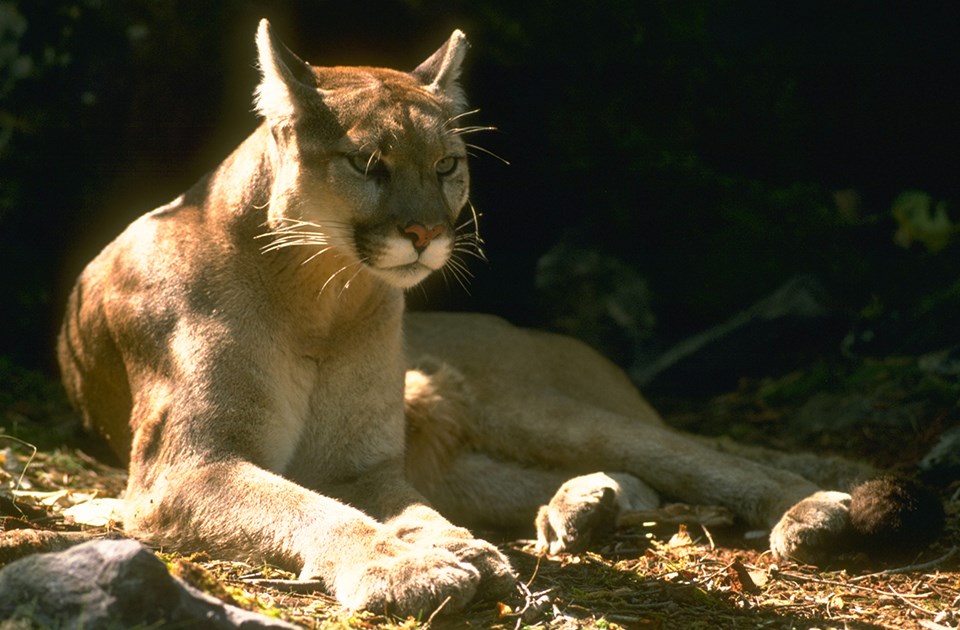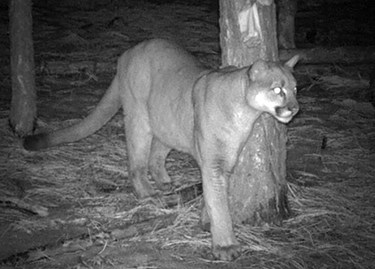
CA Department of Fish and Game
Mountain lions—also called cougars, pumas or panthers—roam Yosemite’s mountains and valleys. These important predators, native to the Americas, are a natural part of the Yosemite landscape. Because they are shy, solitary creatures, they elude visitors and are typically unconcerned by human presence even in close proximity. Sightings in the park often document a mountain lion on the prowl—sometimes chasing, killing or eating a raccoon or coyote—in developed areas. Basic Biology

Adult males can reach more than 8 feet long, from nose to end of their tail, and females can be 7 feet long. Mountain lions are unable to roar but can vocalize a penetrating a scream. These stalk-and-ambush predators, quiet as a mouse at times, kill prey with one powerful bite and will come back to feed on a carcass several times. Half of California is believed to be prime mountain lion country—from sea level to 10,000 feet in elevation—with a potential population of 5,000 statewide. Historically, from 1907-1963, they were viewed by the State of California as a “bountied predator” in which a monetary incentive was offered for every kill in an attempt to eradicate them. Then, their status changed to "big game," and mountain lions were made available to trophy hunting. Ultimately, in 1990, Proposition 117 passed that bans almost all killings of mountain lions in California. If you see a mountain lion, take these additional precautions:
More Information
|
Last updated: February 13, 2017
